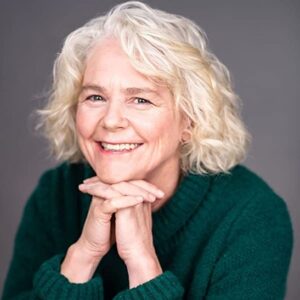
The closest Virginia Heffernan (MFA 2021) ever got to the subject of her newly published book was about 400 kilometres away. Flying into Cochrane, Ontario, nearly as far north as you can get by road, she paddled the Abitibi River by canoe, traversing the flat, swampy lowlands of Treaty 9 territory to Moose Factory on James Bay.
The journey was the best way for Heffernan to get a sense of the land surrounding the Ring of Fire, a patch of Canadian shield rich in chromium and nickel that is the focus of her book Ring of Fire: High Stakes Mining in a Lowland Wilderness from ECW Press.
What she found was a breathtakingly remote landscape, with wide, shallow rivers trimmed by impenetrable sedgegrass, along which Heffernan — a trained field geologist — found plentiful fossils in the limestone gravel.
Will it be possible, her book asks, for Canada to navigate the geographic, logistical, and political hurdles to turn this land into a multibillion-dollar resource opportunity?
As a writer, Heffernan says, the remoteness of the Ring of Fire was as much a challenge to her as it is to would-be prospectors. Pandemic protections in the small First-Nations communities surrounding the Ring of Fire blocked her from visiting the area itself. What’s more, most of the action driving the book — the actual mining — hasn’t yet happened, and one of her main characters, mining promoter Richard Nemis, died shortly before she began writing.
You can’t, one editor told her, write a book about something that hasn’t happened yet in a place you can’t visit.
“It’s not about the mine, it’s about the controversy,” she told him.
To solve the problem, she turned to her King’s MFA mentor, Ken McGoogan, who convinced her she would have to make herself a more central part of the story. She drew on her own experiences working in the field as a geologist and her years of reporting on the mining industry to bring her readers into company offices, down mineshafts, and into the Canadian wilderness on the hunt for precious minerals.
“There’s a little bit of memoir in there now, which was interesting to work with, because it’s not what I set out to do,” she says. “I figured, I might as well experiment.”
Learning to craft creative nonfiction was new and challenging, Heffernan says, even though she’s been writing for decades. She earned a BSc in earth sciences from Queen’s University before working internationally as a geologist, then switched careers to be a staff writer for The Northern Miner. She went on to take an MSc from the University of Toronto, and then worked as a freelance writer covering business, science and the environment. She was nominated for a National Magazine Award in 2019 for a feature on a new Canadian mining technology startup and wrote two technical books published by the Financial Times.
Writing her previous books — one titled Growth Strategies for the Mining Industry: Acquisition or Exploration? — did little to prepare her for developing and pitching a creative nonfiction book for a wider audience, she says.
Here, again, the MFA gave her a hand. The proposal Heffernan honed during her King’s MFA was shortlisted for Penguin Random House’s prize for best nonfiction book proposal, helping her make her case to Toronto’s ECW Press (the eventual winner of the Penguin prize was also a King’s MFA grad, 2017’s Amanda Leslie.) Heffernan graduated from the MFA program in 2021 and submitted her manuscript in 2022.
Heffernan says after writing a book while working as a full-time freelance journalist, she’s looking forward to a bit of rest. But if the future she imagines in Ring of Fire ever comes to pass, she may have to return to the wilderness.
“This one may require a second edition if the mine ever gets built.”

